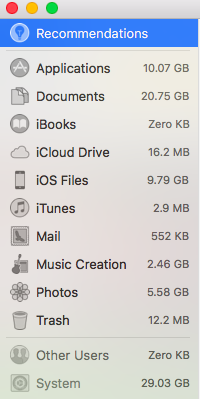

If you don't want to delete certain files, you might be able to save space by compressing them. Check the Users folder on Macintosh HD for any shared files that you no longer need to share.If your Mac is set up for multiple users, delete users that no longer need access to your Mac. Or ask them to follow the steps in this article after logging in to their user account. Also check the Users folder on Macintosh HD for any undeleted data belonging to deleted users.If you use your Mac to back up your iPhone or iPad, you can delete old backups.Also choose Mailbox > Erase Deleted Items.


Delete music, movies, podcasts, or other media, especially if it's media that you can stream or download again as needed.You can also delete files that you no longer need. Which users can do what things with specific files.If you have another storage device, such as an external drive connected to your Mac, you can move files to that device. Media files such as photos and videos can use a lot of storage space, so you can take steps such as these: When you install an app on your Mac, the piece of software arrives as part of a package of files, including permissions that tell Next, let's clean up the applications you are keeping. The last option, Reduce Clutter, lets you review large files, downloads and unsupported apps and manually delete those you no longer need. The third option automatically cleans out the trash, removing items that have been sitting in the Trash for more than 30 days. The second option lets you optimize storage for theīy removing downloaded movies and shows after you watch them. Upgrading to 50GB will cost you $0.99 a month, and the two bigger plans offer 200GB for $2.99 a month or 2TB for $9.99 a month. Keep in mind that you will likely run up against the free 5GB allotment on iCloud and begin to pay for space on Apple's cloud. , using the iCloud Photo Library is probably this single biggest space saver for your Mac.


 0 kommentar(er)
0 kommentar(er)
